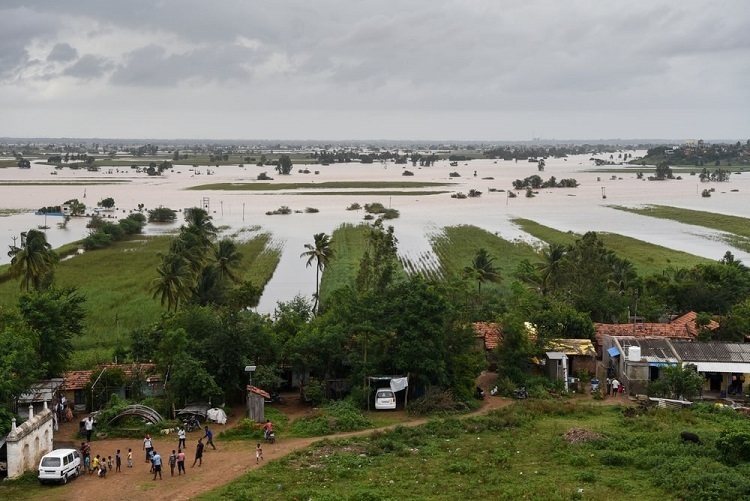Most homeowners and builders build their homes while keeping geography in mind, as weather can adversely affect your homes. Various weather conditions that affect your homes include rain, sunlight, hail, storm, and drought. In the past decade, the earth has gone through extreme climatic changes. Some of it is human folly, while the rest is natural.
If you are getting a home built, you ought to keep the environmental factors in mind. This will help you to safeguard your home amidst harsh weather. Here you will learn how different weather conditions can affect your home. Additionally, you will also get ideas to protect against them.
Table of Contents
Strong Winds
Strong and incessant winds create two kinds of problems. One is racking, and the other is up-lift. Hurricanes and tornadoes affect the roofs of homes by causing an uplift. An up-lift occurs when winds blow at high speed and creates a low-pressure zone on the side that is sheltered from the wind. It leads to a clash with inside pressure, pushing the structure outwards. Most homeowners and builders use special reinforcement to hold the components together.
Racking is another common effect of strong winds. Doors and windows are the worst sufferers, and the shingles are also often torn. The wind can also drive the rainwater under roof shingles and window frames. You need to attach certain holdings and fasteners in these strategic areas to avoid racking.
Snow in Winter
No matter how nicely you build the roof, ice and snow are different ball games altogether. The roof shingles may not be able to hold themselves against the ice and snow sheets. You will also notice roof leaks. However, you need not fret. You are not the only one to face this. In the winter, ice dams form on the edges of your roof. As the ice buildup increases, it closes all the gutters, leading to roof leakage. Thus, it is also one of the most common reasons for basement floods.
When excessive snowfall occurs, you feel cold inside. And, the result is an increased need for artificial warmth. Hence, you will most probably switch on the heater. The heat floats up and begins to melt the ice above. This melted snow can slide down most hanging rooms and collect at the edges. The process continues for some time and results in a massive sheet of ice that forms above.
The water slowly seeps inside the shingles, the attic, and insulation. Finally, it also reaches the exterior walls. This leads to extensive damage. Moreover, leakage stains also form there. You need to get in touch with a roof leakage repair company to make amendments. Removal of the ice dams and improving the insulation seems to be the only way out. You might need to get the gutter cleaned as well.
Rain Water Seepage
The fancier the design, the more vulnerable the home. You will find lots of gaps in fancy roofing and structural components. Most of the damage occurs in the skylights, chimney area, and foundation. The chimney areas and the skylights have sealant. However, it dries over a period. The rainwater causes a lot of damage to the gaps.
Moreover, if the soil bed beneath the foundation gets over-saturated, it might shift. It is dangerous to live in such a house. It is a common problem that New Orleans and West Palm Beach residents face due to heavy rains.
Sun and the Resulting Heat
Extreme sunlight is a common problem that affects most houses. Hence, all builders and homeowners try to use a material that won’t discolor or age due to sunlight. Roofs wear out faster in warm zones. Moreover, the heat can cause the wood to dry out. An attic fan does help to cool the air and release it through the attic vents.
The color of the roof is also important. If you paint the rooftops in bright colors, it reflects a considerable part of the heat. Moreover, air conditioners work more efficiently. However, if the color is dark, it will absorb the heat, leading to health conditions. Builders in desert-like warm climate regions use materials resistant to constant expansion and contraction as the temperature in these areas can get too hot in the day and chill down in the evenings.
Drought Conditions
Drought conditions usually cause the soil beneath to crack. It can stress out the foundation of the home. Water seepage inside the cracks can further lead to expansion. Thus, the foundation is in a state of shock. The water in the wells in such areas also gets contaminated fast. And why not? The water table comes down as a result of the drought conditions.
You should consider these factors while designing homes. Most builders do. If you are re-roofing your home or buying a renovated one, do check for these. In case you miss it, you might have to incur damages later.
Meta title: Learn How to Make Your Home Weather-resistant
meta desc: The weather has an important role in homebuilding. Most builders consider the conditions that can affect a particular location. Know about the impact of adverse climate on your home and guard against it.

